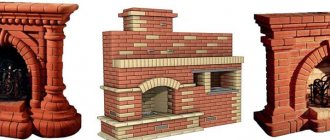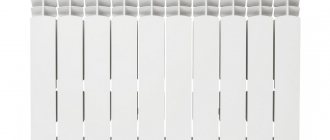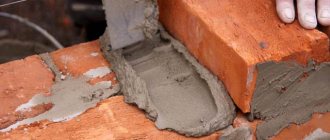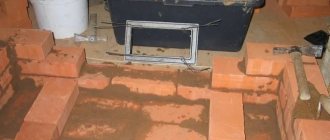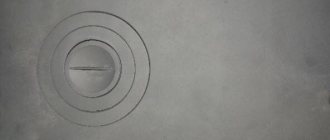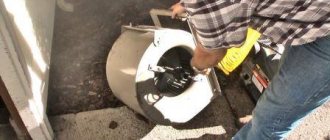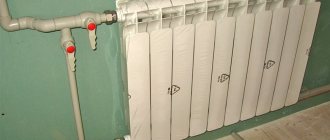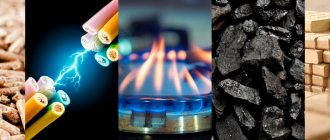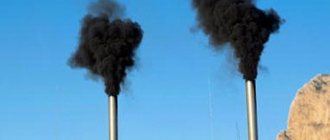- Refractory
- Visual inspection
Not every building material is suitable for the construction of an effective heating device and a safe gas exhaust channel. Therefore, we propose to consider bricks for laying a stove: which ones are better, what shape, color or size they may have, how to choose and distinguish high-quality from bad, what kind of manufacturers produce them. After reading this information, you will know what and in what quantity to buy for arranging the foundation, the lining itself, and how not to overpay.
People continue to prefer high heat storage, practicality that allows you to build different shapes, and the special comfort of a traditional appearance. Long service life and environmental friendliness are a classic solution for years to come.
Basic requirements for bricks for laying stoves
It is important that the finished structure can withstand a number of negative factors for many years. Therefore, the building material used must have the following properties:
- high strength characteristics - so that it does not collapse under mechanical shocks;
- fire resistance - so that it does not deform from an open flame;
- non-susceptibility to temperature fluctuations - so that heat or frost do not have a critical effect;
- the ability to retain accumulated heat for a long time - so that a comfortable microclimate reigns in the room.
Structural protection
So, one of the two main purposes of stove bricks is to protect the inner metal layer of the firebox. This is done by laying stove bricks around the inside of the firebox.
The fireclay bricks for each individual kiln can be of different sizes to ensure a tight fit. This ensures that the heat does not escape and hit the steel frame.
Furnace elements and suitable bricks
Any heating device consists of five conventional parts:
- foundation - takes on the weight of the entire structure, prevents the penetration of cold and moisture from the ground into the steam room and adjacent rooms;
- firebox - the area in which the direct flame burns is exposed to the highest (and sometimes critical) temperatures;
- channels - a sleeve (or their system) designed to remove waste combustion products to the street;
- cladding is a finishing layer that performs a decorative function, ensuring the visual appeal of the structure within the framework of a stylish interior;
- pipe - its outer surface is in direct contact with the external environment, removing combustion products, and therefore experiences the maximum temperature difference.
Now let's see what building material to take for each of these elements.
For the foundation
It’s immediately clear what kind of brick is needed for the base of the stove - durable, but also moisture and frost-resistant. Do not forget that its lower part will lie on the ground (or on a surface adjacent to it), possibly get wet from groundwater and most definitely experience low temperatures during the cold season.
Therefore, the best option in this case is grade I ceramics, which can withstand the weight of even large two-story heating units. In case of small loads on the supporting surface, it is permissible to use piece products of lower quality. Although we recommend that you do not skimp on this issue and spend money, you should ensure a certain margin of safety, especially if the climate in your region is quite harsh and the weather varies significantly depending on the season.
For the firebox
- for the internal part in direct contact with the flame, a fire-resistant fireclay brick is required that can withstand heating up to +1300°C and above without loss of strength properties;
- for the external one (under the cladding) a ceramic one will be sufficient, which can withstand temperatures of +700-900°C without deformation, because part of the heat will be absorbed by the previous layer.
For smoke ducts
The smoke duct is not as hot as the firebox, but still experiences serious thermal effects. Therefore, proceed according to the already familiar scheme: make the first row from refractory, and the second from standard red clay brick, and be sure to line it with a FERRUM stainless steel chimney.
Taking into account all these features, we come to the conclusion that the best brick for a stove pipe is ceramic: it doesn’t mind even sudden climate changes, it doesn’t crack even when it’s -40°C outside, and steam comes out of the hose at +300°C. In regions with particularly harsh winters, it can be reinforced with a second row, already clinker.
For cladding
It all depends on what design idea you want to implement:
- If you are going to tiling, take the usual construction grade II - it is porous and rough to ensure reliable adhesion.
- If you do not plan subsequent finishing, give preference to red clay - its color, combined with neatly executed seams, will be a classically attractive decor.
Modern facing materials imitate various textures and structures - the same wood, marble, metal and so on - their surface can be smooth, matte, glossy, embossed, with refined, precise, complex designs and patterns. They are worth spending money on.
Clinker blocks
The stove maker knows how to make a stove out of brick, but the average person only needs to understand the types of material. Clinker blocks are considered a type of ceramic brick, the only difference is in the manufacturing technology.
To produce the material, refractory types of clay are used. The firing temperature is even higher than that used for ceramic material. During firing, the clay mixture with mineral additives turns into a glassy mass, which means high strength and frost resistance.
In furnace construction, this material is not so common, primarily because of the price. It is not profitable to lay out the entire stove from expensive bricks. High density is, on the one hand, good, but on the other hand, the stove turns out to be very heavy. Stove makers claim that a clinker brick stove does not breathe, unlike a structure made of ceramic blocks.
Clinker heat-resistant bricks for a furnace can be useful if:
- We need to build a big stove. Then clinker blocks can be used for the foundation so that the foundation is reliable.
- The internal chimney channel is laid out. The outside of the structure can be lined with another material, but clinker is perfect for interior decoration. Resistance to temperature changes and mechanical loads is the key to a long-lasting chimney.
Small stoves are sometimes made from clinker blocks. In this case, the designs are in no way inferior to cast iron stoves in terms of characteristics. The material performed well in the construction of a sauna stove or a bathhouse itself.
Types of bricks for stoves by material and manufacturing technology
This material has been popular for many years, so it is not surprising that a wide variety of its variants are now available. But are they all suitable for creating fireboxes, channels, pipes? Let's take a closer look at their features and decide.
Refractory
For our purposes today, two types are relevant.
Quartz - made of sandstone with clay inclusions. Durable, with a glazed surface, it is heat resistant. But it also has disadvantages, including low resistance to chemical environments and oxides, as well as relatively high cost. Therefore, a tooth is usually made from it - a shaped reflector of infrared radiation - but not a chimney. It is not suitable for hoses, as it is quickly destroyed by condensation.
Fireclay - there is more clay in it, it is refractory, and each product is made by firing at +1500°C, so in practical use it is not afraid of temperatures of 1300-1400°C. It is immediately recognizable by its creamy hue and its fine-grained structure - if you try to split it, it will crumble into several large pieces rather than crumble. Its price is cheaper than the previous version, but also impressive, so it is usually used only for individual elements, most often the firebox.
Clinker brick for kiln
It is produced from refractory grades of clay, fired at +1300-1500°C, so that the base material is sintered with material inclusions and forms a glassy mass, which, after hardening, has high frost resistance (from F100) and mechanical strength (from M300).
At the same time, it is quite heavy, does not breathe well, and is relatively expensive, so it is economically and practically impractical to build an entire structure from it. It is used in the following situations:
- creation of the lower rows of the foundation for the installation of a large heating unit;
- construction of the internal part of the chimney channel - taking into account the movement of a large volume of combustion products and the temperature differences operating in it;
- organizing a heating system (and maintaining the desired microclimate) in small rooms, for example, in steam rooms.
Sand-lime brick
It is made from quartz sand, fine and purified, with limestone additives - in a ratio of 90 to 10%. Water is added to the desired viscosity, the resulting composition is molded and pressed under high pressure and high temperature into parallelepipeds of a dense structure.
The ability to add dyes, which allows you to produce these products in any color you like. The rich palette makes it suitable for use in the construction of internal partitions in buildings and for the cladding of houses, but nothing more. This building material does not tolerate temperature changes well, absorbs moisture, and does not adhere reliably to clay mortar, so you cannot make a good pipe or foundation with it.
Hyper-pressed
It is made from screenings of dolomite, marble, shell rock and other limestone rocks, with Portland cement as a binder (10 percent of it, no more). A viscous mass is created, which is then molded and pressed into blocks of the desired geometry, smooth or textured. Finished piece products have good frost resistance (F100-150) and strength (M200-300), but they are too heavy, do not tolerate fracture loads well and quickly crack with a sharp change in the heating-cooling cycle. Therefore, they are used to decorate facades, create decorative fences, and finish those places where thermal influences are excluded.
Material that cannot be used for stove masonry
The following types of brick are not suitable for this purpose:
- silicate white
- raw without firing;
- hollow;
- slip.
The first is not a fire-resistant material. Suitable for cladding the outside of houses. The second is hygroscopic. When first fired, it will begin to crack. The third one cannot withstand sudden temperature changes. Deforms under thermal load. The slip brick will simply crumble due to temperature fluctuations.
Which brick should not be used for a stove?
The following options will not work:
- Raw - firstly, it is not always strictly the same shape, which will certainly result in flaws and an untidy appearance of the structure. Secondly, it has only undergone atmospheric drying, but not firing, which means that under the influence of high temperatures it will simply crumble into dust.
- Slip casting - it is also often non-standard, which slows down and complicates the construction of a firebox, pipe, channel, but more importantly, it quickly collapses with frequent changes in ambient temperature. This means that its only area of application is decorative.
- Hollow or slotted - it will not be able to stably withstand current loads, even mechanical, not to mention thermal. Literally a few kindlings in a cold winter, and cracks will appear, which over time will develop into destruction.
- Silicate or hyper-pressed - they do not tolerate heat well, and contain calcareous components that evaporate when heated, forming compounds harmful to health with the air.
If all of these types simply cannot be taken, and others are only partially suitable, then which stove brick is best to use for laying a stove? Ceramic is a classic option that has proven its practicality and remains relevant. It is made by plastic molding, squeezing clay through a die and then cutting it into blocks of suitable sizes. It is durable, frost-resistant and, in principle, meets all the above requirements; it can be of the following varieties:
- I (first) – its geometry is as accurate as possible, the color is bright and uniform, marks are free of burrs, the edges are not prone to crumble, and rings metallic when tapped; used in direct construction;
- II (second) - it is a little unburned, with a lighter shade, clearly, but sounds dull; used primarily for cladding;
- III (third) - burnt out, in terms of its operational characteristics does not reach the standard, but meets the requirements for creating a foundation.
And in any case, dimensions are important - when they are unified, it is very convenient.
Molding
Why did you highlight this characteristic? Because the service life of the stove and the efficiency of its operation depend on it.
Main types of molding:
- Semi-dry pressing. The clay mass has a moisture content of about 12%; excess water is squeezed out after the mass is laid out in molds. The final pressing is carried out after completely squeezing out the water and firing at high temperatures. Thanks to the technology, the surface of the bricks is smooth or with a designed pattern, the geometry of the blocks is at its best. Despite all the advantages, such pressing is not the most suitable option for stove masonry.
- Plastic molding. The initial mass is even more moist than in the previous form. There may be more than twenty percent water in clay. Layers are formed from the clay mass using extrusion plants. These layers are cut into modules of a certain size and subjected to temperature firing. What bricks should be used when laying stoves? These are the ones because they contain more moisture, which not only gives plasticity, but also participates in physical and chemical processes. The latter occur during firing, which gives the blocks the necessary heat resistance, porosity and strength. Such bricks accumulate heat and “breathe”.
- Slip casting. The semi-liquid mass is poured into molds and then settled at moderate temperatures. High-precision forms are obtained, which are needed, for example, in the manufacture of finishing blocks. But neither a heating-cooking stove made of this type of brick nor a chimney can be folded. The material is not even suitable for cladding due to low heat resistance. Already at a minimal increase in temperature it begins to crumble.
The technology used to make the brick is clear even from the outside. Blocks made by plastic molding have cutting marks on the surface from the formation, such as lines, grooves or burrs.
Size and shape
A standard ceramic, that is, single red brick for a stove is a parallelepiped 250 by 120 by 65 mm. Previously, manufacturers also produced 230 by 120 by 65 mm, but today this option is already obsolete. When decorating and constructing a firebox, shaped piece products and non-standard ones are relevant.
When constructing shaped elements (arches, vaults, etc.) - wedge-shaped, with a narrower end or edge, and the smaller side in this case is written in the diagrams using a fraction, for example: 230 X 120 X 65/45.
For exterior decoration, arched ones with rounded corners are applicable. But each such original element must be indicated both in the order and in the appendix table with the list of materials used.
The use of fireclay clay in art
Representatives of art liked the unique properties of the material, so today you can see a wide variety of products made from fireclay clay. Souvenir figurines and ceramic dishes are made from it. The products are suitable for decorating a private home, office, restaurant in the national style.
Products made from fireclay clay Source goldvoice.club
The high plasticity of the material allows you to create detailed figures. People and animals with characteristic facial features and fragments of ornamentation are found even on the smallest figures. The environmental friendliness of the material also plays an important role.
To create a figurine or other work of art from ceramics, plastic clay with the addition of fireclay sand (up to 40%) is used. The process begins with developing a sketch, drawing up a mold and pouring material into it. Once the product has completely dried, it will be ready.
How to choose a brick for a stove in a bathhouse
We offer a combined option: lay out the firebox from refractory ceramic, the accompanying cladding is made from simple red, but always first-class.
Keep in mind that quartz or fireclay are not suitable here, since they begin to collapse at a humidity of 60%, and its level in the steam room is usually higher. Clinker with its heat dissipation will be a good option, but relatively expensive, so its use is only advisable when arranging small rooms.
Visual inspection
Before purchasing please make sure that:
- the geometry of each piece is precisely maintained, with deviations of no more than 2 mm;
- when gently tapped with a hammer, a slight ringing sound is heard - this is a characteristic sign of the absence of cracks;
- The color of the cut is uniform, there is no crumbling.
Marking
Any batch made receives an alphanumeric code containing the following useful information:
- Name;
- type – L – front, R – ordinary;
- dimensions;
- margin of safety;
- level of frost resistance;
- average density indicator;
- GOST release.
Size
The following tables will help you understand what brand of brick is needed for laying a stove.
Domestic manufacturers
| Name | Designation | Marking | Dimensions |
| Single | ABOUT | 1-NF | 250x120x65 |
| Modular | M | 1,3-NF | 288x138x65 |
| Euro | E | 0.7NF | 250x85x65 |
| One and a half | U | 1.4NF | 250x120x88 |
| Thickened with voids | ISIS | 1.4NF | 250x120x88 |
| Double (stone) | TO | 1.8NF 2.1NF 2.9NF 3.2NF 3.7NF 4.5NF | 288x138x88 250x120x140 288x138x140 250x180x140 288x288x88 250x250x140 |
| Large format ceramic | QC | 4.9NF 6.0NF 6.8NF 9.3NF 10.7NF 11.2NF 14.3NF | 380x180x140 250x250x188 380x250x140 380x255x188 380x250x219 398x250x219 510x250x219 |
| With horizontal voids | KG | 1.8NF | 250x200x70 |
European manufacturers
| Marking | Dimensions, mm |
| NF | 240x115x71 |
| DF | 240x115x52 |
| 2DF | 240x115x113 |
| W.F. | 210x100x50 |
| WDF | 210x100x65 |
| RF | 210x115x61 |
Form
As an example, let’s take the most common option – ceramic bricks for stoves. It is a regular parallelepiped with sides, each of which has its own name: the largest is the bed, the middle (side) is the spoon, the smallest (end) is the poke.
Color
Depends on the type of piece product. Fired clay attracts with its thick red-brown tint, which is attractive in itself and does not require additional finishing. Fireclay is creamy yellow, not so interesting in appearance, so it is better to cover an element made from it with something more impressive, for example, tiles.
The silicate and hyper-pressed options are ready to amaze with the variety of palettes and even textures, but we have already found out that they are not suitable for structures that experience heating.
The main thing is that the color is uniform, including on the cut or break line. Lighter or darker spots on the edges or in the thickness indicate poor firing quality, and therefore insufficient strength.
Conclusion
Choosing quality bricks is quite a troublesome task. For masonry, only dense, defect-free material can be used. You should know that each part of the furnace has its own type. For the firebox, ash pan, chimneys - fireclay, for the chimney - frost-resistant, for finishing - ceramic or clinker facing. Although low-quality material is cheaper, it is not suitable for building a furnace. By saving on quality, you will get a short-lived and fragile structure that will last a maximum of one season.
Manufacturers
When deciding which brick is best to choose for laying a stove in the house, pay attention to the following brands:
- LODE (Latvia) – produces a wide range, a key part of which are brands for fireplaces;
- Wienerberger AG (Austria) is a concern with factories in 30 countries, famous for its heat-resistant Terca series;
- JSC "Keramika" (Belarus) - offers ceramic solutions for cladding, along with an impressive variety of shaped products.
- OJSC BKO and CJSC BKSM are two factories from Russia (Borovichi) offering fire-resistant collections to consumers.
- OJSC Pobeda LSR is another domestic manufacturer (from St. Petersburg) that sells good ceramics at affordable prices.
Let's sum it up
So, which brick is better for the stove? To build a high-quality stove, you need to choose the right brick. It should be:
- Full-bodied.
- High Quality.
- Refractory.
- Density grade 200 – 250.
- Possess high frost resistance.
- Comply with GOST.
One final piece of advice: always buy enough bricks to avoid a situation where there is not enough building materials. It is not recommended to purchase additional bricks later, since stones from different batches may differ in color and quality.
Watch the video: “Which brick to choose”
Where can I buy?
This question is important for many home craftsmen. Definitely large specialized construction stores. It is better if the company is an official dealer of the manufacturer.
The most important thing is where to buy stove blocks. It is much more important to check their quality and all documentation from the sellers. Sometimes construction markets charge high prices for products from well-known brands. Use the data provided in this article and carefully check the quality and measure the dimensions of heat-resistant bricks. At the slightest deviation, think - maybe go to another store and look for quality material?
